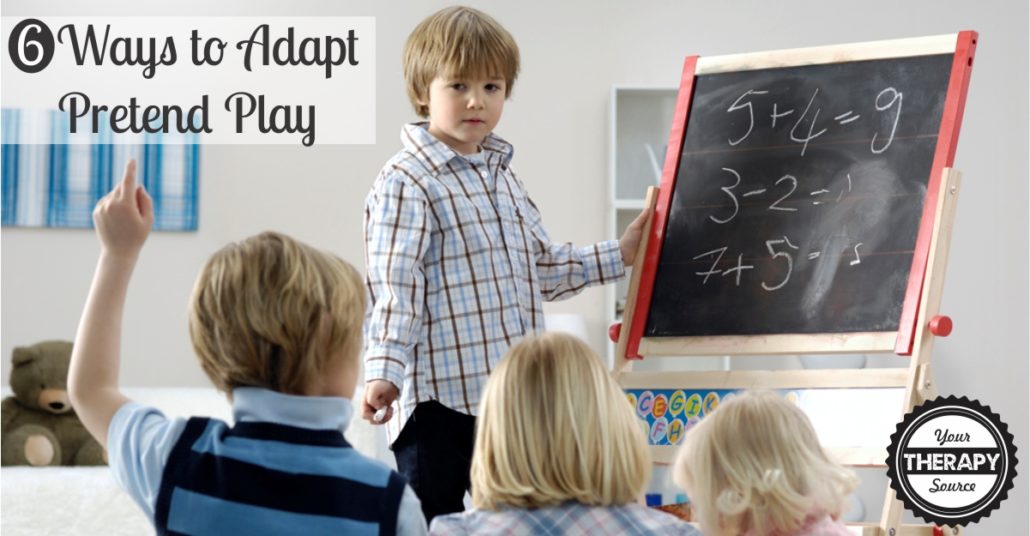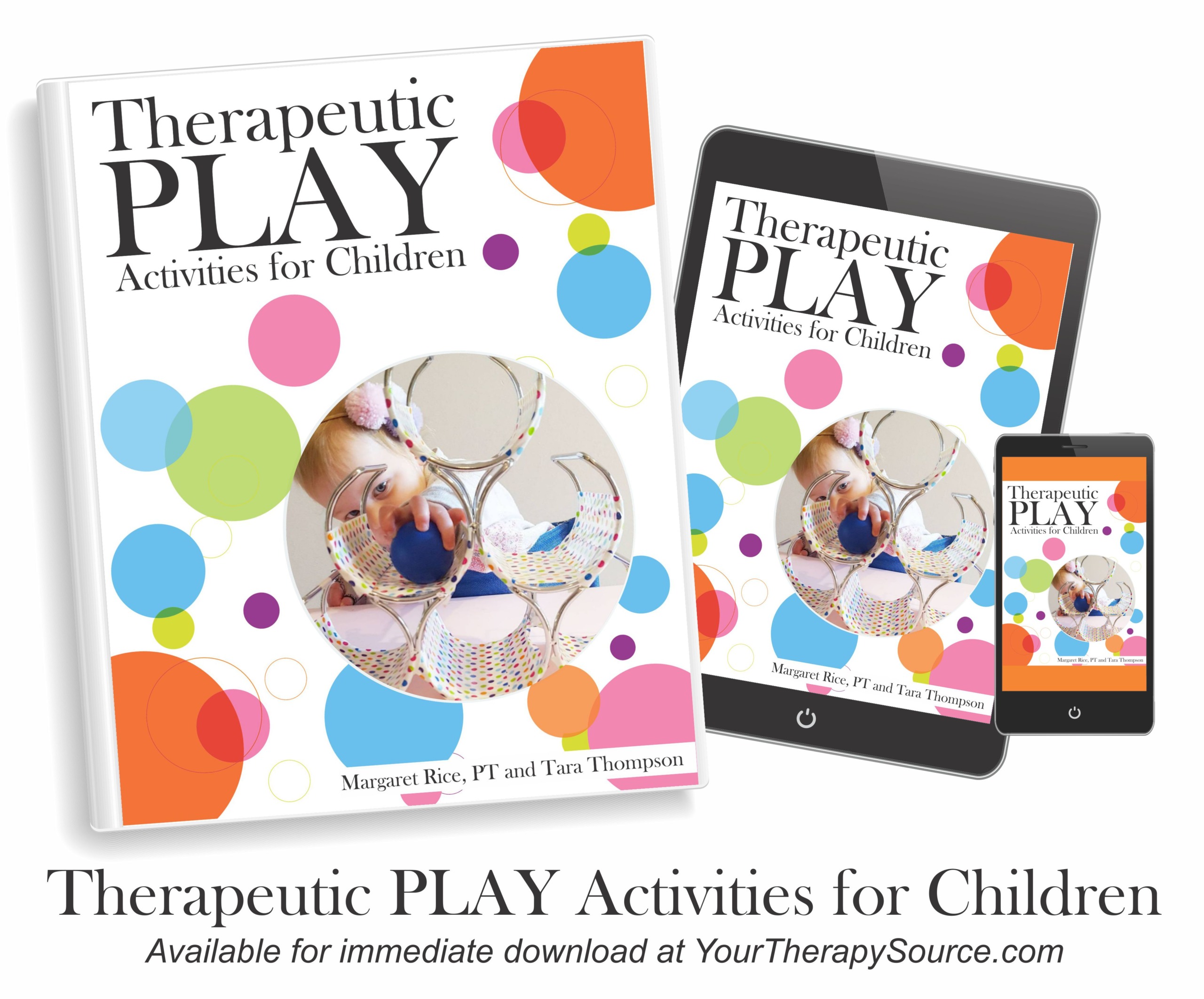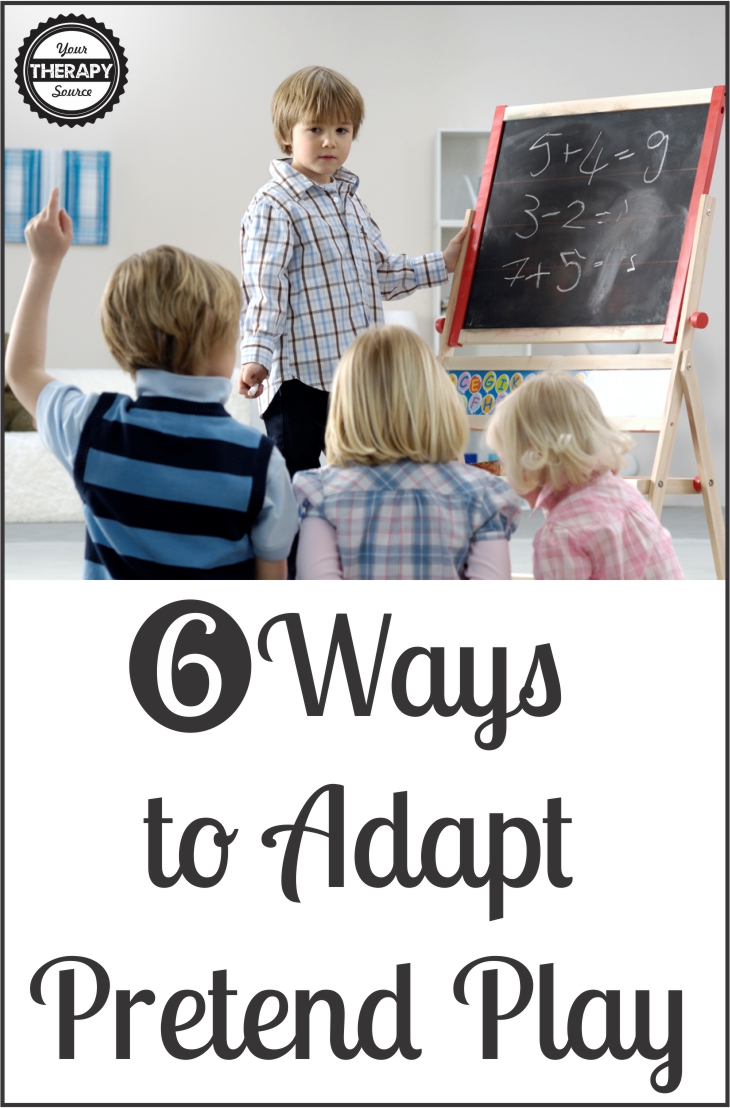Adaptive Toys During Pretend Play

What Does the Research Say on Adaptive Toys and Pretend Play for Children with Cerebral Palsy?
Research on adaptive toys indicate that children with cerebral palsy display less effective expression and imagination when engaging in pretend play as compared to typically developing peers.
Although, when the children with cerebral palsy played with adapted pretend play toys positive affective expression and imagination increased.
6 Tips for Using Adaptive Toys During Pretend Play
Pretend play is a learning experience for children that requires so many skills. Pediatric therapists should provide consultation services to adapt toys and activities in the home, preschools and early elementary schools. Here are some suggestions:
1. Use a switch – is it possible to adapt the toy to provide switch access? Some pretend play toys such as pretend kitchen sets have knobs to turn on/off.
2. Use open ended, easily manipulated, pretend play objects – For example items such a play silks are light weight and can be adapted with a wrist cuff for a child to use. Maybe large hats to represent role playing instead of having to put full costumes on. Costumes with Velcro or ones with easy closures may work better.
3. Make sure toys are within reach – if a child can not reach the toy it is useless. Shelving can be lowered, place toys on the floor or put toys on an accessible table top for all the children to experience them.
4. Adapt handles if necessary – If objects are hard to grab try to build up handles or knobs to make it easier to grasp. For example, you could use foam around toy baby bottles to make it easier to hold.
5. Try large, bright materials – For example, if playing grocery store use regular size recycled boxes with adapted grips if necessary. You could cut handles into cereal boxes making them easier to lift. Limit visual stimulation in the background.
6. Provide demonstrations – Not necessarily an adaptation but sometimes children may benefit from suggestions of how to use the toys for pretend play.
Need ideas to help teach pretend play? Check out all the ideas at Growing Play (a division of Your Therapy Source). There are many packets to encourage pretend play with different themes such as school, doctor, animal care, secret agent, travel and more!
Reference: Hsieh HC. Effectiveness of adaptive pretend play on affective expression and imagination of children with cerebral palsy. Res Dev Disabil. 2012 Jun 22;33(6):1975-1983.
 Therapeutic Play Activities for Children digital download includes 100 play activity pages and 12 tip sheets. The play activities encourage the development of fine motor skills, bimanual skills, rolling, crawling, tall kneeling, standing balance and cruising with a strong focus on children with cerebral palsy. FIND OUT MORE INFORMATION.
Therapeutic Play Activities for Children digital download includes 100 play activity pages and 12 tip sheets. The play activities encourage the development of fine motor skills, bimanual skills, rolling, crawling, tall kneeling, standing balance and cruising with a strong focus on children with cerebral palsy. FIND OUT MORE INFORMATION.
Read More on Pretend Play
Read Why Children NEED Pretend Play
Read about Pretend Play and Executive Function
Going to Doctor Visual Schedule, Social Story Starters, Pretend Play, Role-Play
How to Facilitate Play Skills in Children with Autism



